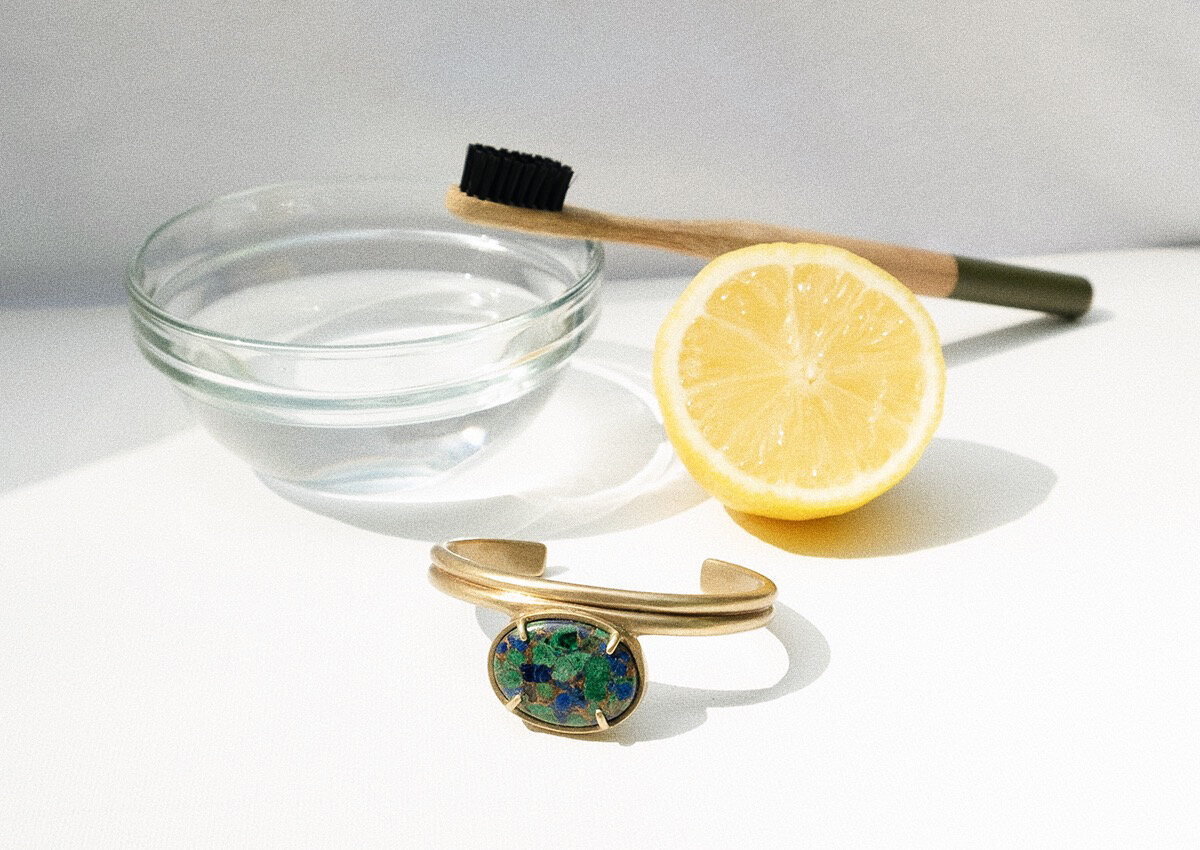With its deep gold color and substantial weight, brass is a wonderful metal to use in jewelry, and I’m so glad to see more designers and jewelry lovers embracing it. Though I’ve heard people worry about how it might tarnish or wear over time, it’s actually pretty easy to keep clean and looking like new.
Below are my recommendations for the best ways to clean brass jewelry, from a light clean to a deep one.
Before you start:
For any cleaning, regardless of the metal, start with the least abrasive method first and working your way up. Lots of tarnish or build-up can be easily removed with just a microfiber cloth, or a soft-bristled toothbrush and soapy water. Why risk ruining a stone or leaving extra scratches if you don’t have to?
Does your piece have stones in it? Avoid using abrasives that could scratch them. Stones like pearl, opal, and turquoise are especially delicate — they’re super soft and can even absorb liquids. For those, stick with the most gentle cleaning you can.
With brass especially, make sure you dry the piece completely once you’ve rinsed it clean. Wet spots on brass will turn dark and need to be cleaned again.
Most Gentle Method:
Use a microfiber cloth, like the kind you’d use to clean your sunglasses, to rub away dirt. To get into the nooks and crannies, use a soft-bristled toothbrush to gently brush away any build-up. Anything with more texture could scratch delicate stones.
If that’s not quite working, put a few squirts of a gentle, chemical-free dish soap in lukewarm water. Soak the toothbrush in that mixture and scrub a bit harder. Be sure to rinse it in soap-free water and dry it completely with a lint-free cloth (I like how thin but absorbent Turkish towels are).
Gentle Method (for Stone-Free Jewelry):
Mix together 1 cup of water, 1-1/2 tbsp of lemon juice (or half a lemon), and 1 tsp of salt in a small bowl. Brush away any visible dirt or build-up on your jewelry with a soft-bristled toothbrush, and then let your piece soak in this lemon mixture for 15-30 minutes. Once it’s clean rinse it in lukewarm water and dry it completely with a soft cloth, like a Turkish towel.
Gentle Method (for Jewelry with Stones):
Mix together 1 tbsp of lemon juice —a little less than half a lemon— and 4-5 tbsp of baking soda in a medium-ish bowl (the baking soda will fizz and overflow in a too-small bowl). You’re looking for a wet paste consistency, so add more baking soda if it’s looking a little thin. Scrub your piece with this mixture, making sure to avoid the stones as much as possible.
If your piece has opals or pearls, just avoid this method entirely and stick with the soapy water from the “Most Gentle” method.
Once your piece is clean again, run it under lukewarm water and dry it completely.





